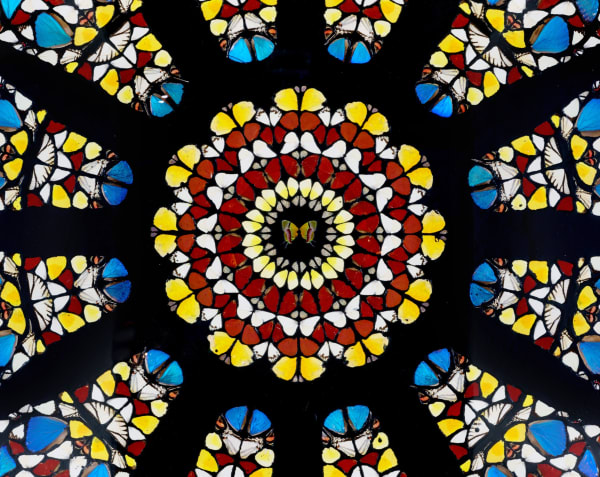-
-
"Where did I get the idea for these glass boxes? I have always loved glass as being something dangerous and something to keep you away. You can see through it but it is solid. I have always loved that kind of idea. I loved that, using glass in a way that it is not a picture frame."
—Damien Hirst
As one of the most iconic series of the artist's career, Medicine Cabinets continue to explore the intersections of art and life science. Physiology, pathology, natural history, and pharmacology – Hirst leverages their authority and credibility to shock the viewer into directly confronting the fundamentals of existence.
-
-
Damien Hirst's interest in creating Medicine Cabinets arose in 1989, when he created his first cabinets for his degree show at Goldsmiths in London. Artist was fascinated by the concept and the potential for endless variations, and continued to refine and develop the idea over time, working to increase the precision and detail of the cabinets.
-

Damien Hirst. Pharmacy, 2004 © Damien Hirst and Sotheby's
-
Damien Hirst's work is characterized by a constant exploration of themes related to mortality and fragility of human life, and his works often provoke a reflection on the inevitability of death. At the same time, however, there is a desire to overcome death and achieve immortality in Hirst's works. This paradox is reflected in his statement, "I am going to die and I want to live forever. I can't escape the fact and I can't let go of the desire."
-
-
Artist's Medicine Cabinets unequivocally embody the very first expression of this central philosophy. Contained behind glass, the regimented assembly of pharmaceutical supplies and pharmaceuticals underlines the fragility of the human body as subject to society's reliance on, and faith in, the restorative and death-eluding assurance of scientific innovation.
-

Prada Mode installation in Dubai, 2022 © Damien Hirst and Prada
-
Through the assortment of medical packages and boxes carefully arranged within the five shelves of the cabinet, 'Something Must Break' signifies the progression of existence itself.
In its elegance, simplicity, and appropriateness, the work earns a prominent place among Hirst's medical cabinets, increasing in conceptual significance over the years.
-
-
Viewing Rooms
Viewing Room | Something Must Break by Damien Hirst
Past viewing_room







